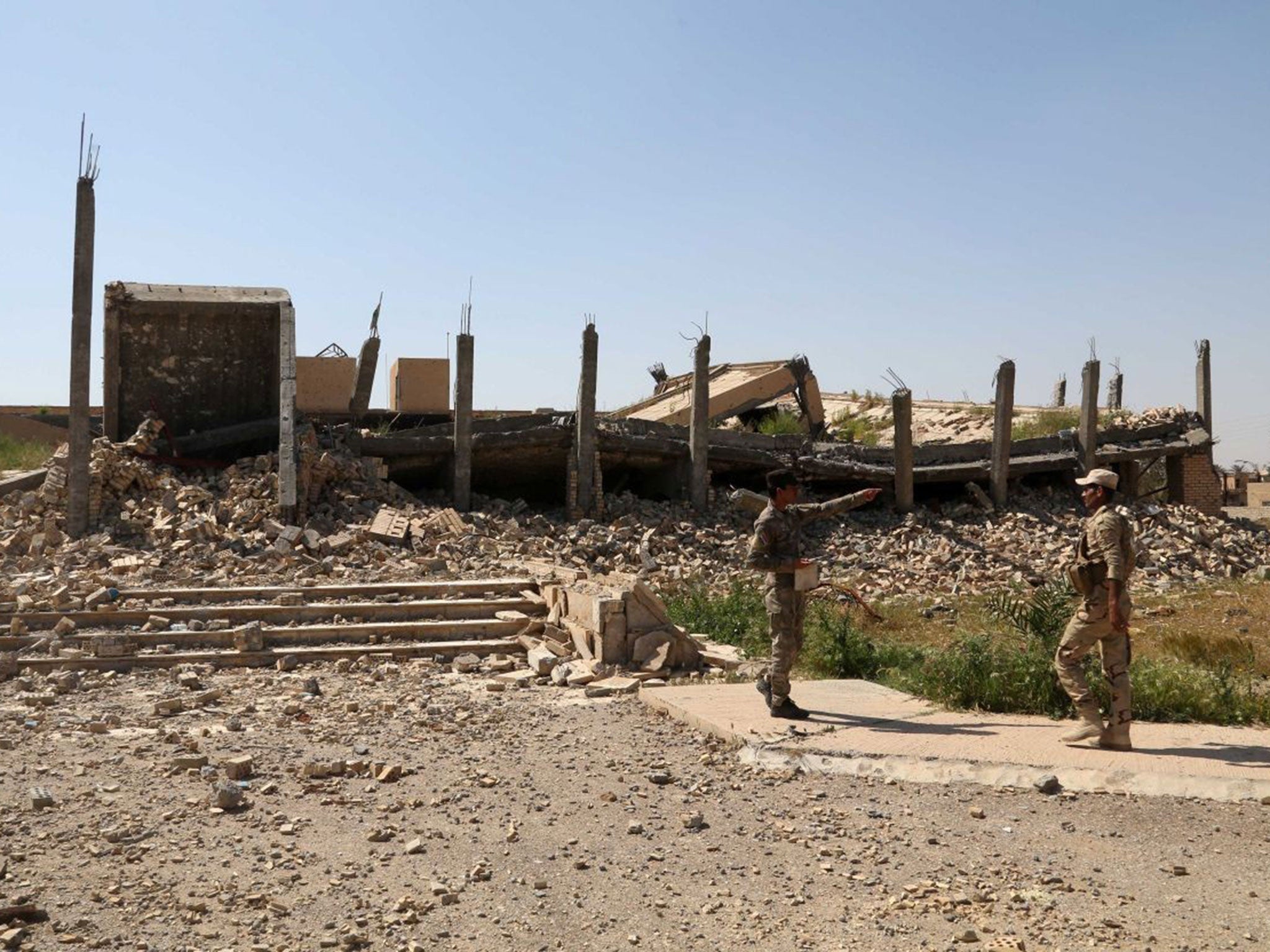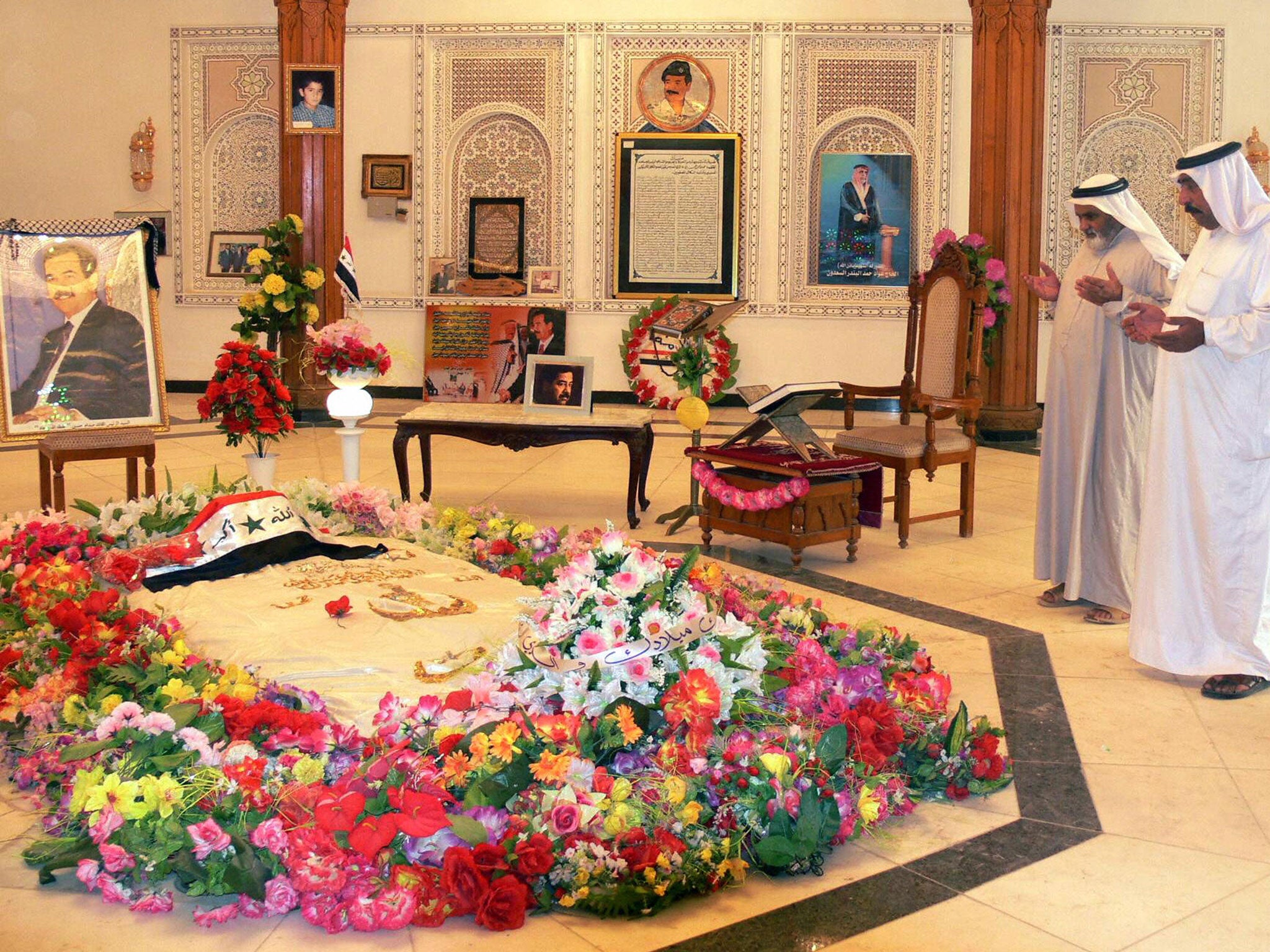Saddam Hussein's tomb reduced to rubble during fight for Tikrit between Isis militants and Iraqi forces
Saddam's body is already thought to have been removed from the mausoleum

Your support helps us to tell the story
From reproductive rights to climate change to Big Tech, The Independent is on the ground when the story is developing. Whether it's investigating the financials of Elon Musk's pro-Trump PAC or producing our latest documentary, 'The A Word', which shines a light on the American women fighting for reproductive rights, we know how important it is to parse out the facts from the messaging.
At such a critical moment in US history, we need reporters on the ground. Your donation allows us to keep sending journalists to speak to both sides of the story.
The Independent is trusted by Americans across the entire political spectrum. And unlike many other quality news outlets, we choose not to lock Americans out of our reporting and analysis with paywalls. We believe quality journalism should be available to everyone, paid for by those who can afford it.
Your support makes all the difference.The tomb of Saddam Hussein has been all-but-destroyed in heavy fighting between Islamic State (Isis) militants and Iraqi forces vying for control of the city of Tikrit.
Footage recorded by the Associated Press in the village of Ouja shows that all that remains of the once-lavish crypt are the support columns that held up the roof.
Poster-sized pictures of the former dictator, which once covered the mausoleum, are now nowhere to be seen amid the mountains of concrete rubble.
In their place Shiite militia flags and photos of militia leaders mark the predominantly Sunni village, including that of Major General Qassem Soleimani, the powerful Iranian general advising Iraqi Shiite militias on the battlefield.
The structure was damaged as fighting intensified to the north and south of Saddam’s hometown - as Iraqi security forces vowed to reach the centre of Tikrit within 48 hours.
Captain Yasser Nu'ma, an official with the Shiite militias, formerly known as the Popular Mobilisation Forces, said: "This is one of the areas where IS militants massed the most because Saddam's grave is here.
"The Isis militants' set an ambush for us by planting bombs around the tomb."
Isis has controlled Tikrit since June, when it also acquired Iraq's second-largest city, Mosul. The extremist group has been helped in its conquest of the country’s north by Saddam loyalists, including military veterans, who appealed to Sunnis who felt victimised by Baghdad's Shiite-dominated government.
In August Isis claimed that the dead leader’s tomb had had been completely destroyed, but local officials said it was just ransacked and burned, but suffered only minor damage.
Saddam was captured by US forces in 2003 and was executed by hanging in December 2006 after an Iraqi special tribunal found him guilty of crimes against humanity for the mass killing of Shiites and Kurds.
His body has been kept in the mausoleum in his birthplace, Ouja, since 2007. The complex featured a marble octagon at the centre of which a bed of fresh flowers covered the place where his body was buried. The extravagant chandelier at its centre was reminiscent of the extravagant life he led until US forces toppled him in 2003.
Iraqi media reported last year that Saddam's body was removed by loyalists amid fears that it would be disturbed in the fighting. The body's location is not known.
Recapturing Tikrit, a Sunni bastion on the Tigris River, would pave the way for an assault on Mosul, which US officials have said could come as soon as next month.
Concerns are mounting that Iraq's Shiite militias, of which an estimated 20,000 are fighting in Tikrit, will carry out revenge attacks on this and other areas that are home to predominantly Sunni residents.

Amnesty International last year said the militias wear military uniforms but operate outside any legal framework and without any official oversight, adding that they are not prosecuted for their crimes.
Earlier this month, Human Rights Watch echoed those concerns, calling on the Iraqi government to protect civilians in Tikrit and allow them to flee combat zones. Its statement noted "numerous atrocities" against Sunni civilians by pro-government militias and security forces.
Shiite militants are increasingly being accused of levelling the Sunni towns they capture from the Islamic State group, making it impossible for residents to return.
Tikrit has already been heavily damaged in months of violence. A satellite image of Tikrit, released last month by the United Nations, observed that at least 536 buildings in the city have been affected by the fighting, with at least 137 completely destroyed and 241 severely damaged.
Local Sunni tribal fighters have formed uneasy alliances with the Iraqi army and Shiite militias in the battle for Tikrit, which Iraqi and US officials believe is essential for defeating the Sunni militant group.
Yazan al-Jubouri, a Sunni from Tikrit fighting alongside the Shiite militias, said that the Islamic State militants killed 16 of his relatives and kept his family living in horror.
"We want to take revenge on those Isis militants who killed our children," he said.
Additional reporting by agencies
Join our commenting forum
Join thought-provoking conversations, follow other Independent readers and see their replies
Comments